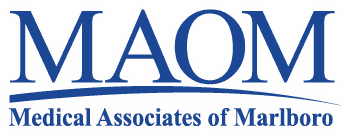Coronary Artery Disease
Basic Facts
- Coronary artery disease is the narrowing of the arteries that deliver blood to the heart, which are called the coronary arteries.
- Most frequently, coronary artery disease is caused by atherosclerosis, or hardening of the arteries.
- Treatment for coronary artery disease includes healthy lifestyle changes, medications, and surgical and minimally invasive procedures.

WHAT ARE THE SYMPTOMS?
During the early stages, coronary artery disease has no symptoms. Erectile dysfunction can be an early indication of the condition before it causes symptoms. When symptoms occur, they can include:
- Stable angina;
- Unstable angina;
- Acute myocardial infarction; and
- Sudden cardiac death.
CAUSES AND RISK FACTORS
The primary cause of coronary artery disease is atherosclerosis. Risk factors include:
- Heredity;
- Age;
- Smoking;
- Being overweight;
- Hypertension;
- High levels of blood lipids;
- Eating a diet high in fat and cholesterol;
- Diabetes mellitus;
- Excessive alcohol use;
- Metabolic syndrome;
- Sleep apnea;
- Emotional stress;
- Lack of exercise; and
- Using stimulants or recreational drugs.
DIAGNOSIS
Tests used to diagnose coronary artery disease include:
- Electrocardiogram (ECG);
- ECG stress test;
- Nuclear stress test;
- Echocardiographic stress testing;
- Blood test;
- Cardiac catheterization and angiography; and
- CT angiography.
TREATMENT APPROACH
Treatment for coronary artery disease is aimed at preventing any of its complications by:
- Relieving symptoms;
- Slowing, stopping, or reversing atherosclerosis by reducing a person's risk factors;
- Reducing the risk of blood clot formation; or
- Clearing or bypassing any blocked arteries.
Lifestyle
Physicians recommend patients make therapeutic lifestyle changes (TLC), including:
- Exercising regularly;
- Quitting smoking;
- Losing weight; and
- Eating right.
Medication
Medications the physician may prescribe include:
- Antihypertensives;
- Lipid-lowering drugs;
- Anticoagulant therapy; and
- Antiplatelet therapy.
Surgical and minimally invasive procedures
When medication cannot adequately increase blood supply to the heart, restoring the blood supply (called revascularization) may be necessary to treat the coronary artery disease. Current revascularization options include angioplasty and stenting and coronary artery bypass graft surgery (CABG).
Copyright © 2017 NorthPoint Domain, Inc. All rights reserved.
This material cannot be reproduced in digital or printed form without the express consent of NorthPoint Domain, Inc. Unauthorized copying or distribution of NorthPoint Domain's Content is an infringement of the copyright holder's rights.
